From Civil War Captain to Christian Church Minister: Part 2
… the unlikely journey of Benjamin Franklin Northcutt (1820-1895).
Note: This post is the second installment in this story. Be sure to read Part 1 first.
When Benjamin Franklin Northcutt (1829-1895) agreed to be interviewed for the Godspeed Publishing Company’s forthcoming book titled, the History of Lewis, Clark, Knox and Scotland Counties of Missouri (1889) he neglected to mention both his role as Captain for the 2nd Northeast Missouri Home Guards and his service to the Union in Missouri’s 21st Volunteer Infantry.
In the late 1800’s the Godspeed Publishing Company (based out of Chicago and St. Louis) made quite a reputation for themselves compiling state and regional histories throughout the Midwest and northern states. These publications in addition to including descriptions of each region’s geography, history, government, and religious institutions, also frequently highlighted biographies of prominent citizens. These biographies were mostly created through first-person interviews, making them especially valuable to future family historians. But when the Godspeed representative made his rounds within Knox County in 1888 interviewing citizens of significance, it seemed that only Benjamin Franklin (B.F.) Northcutt and son James Robert Northcutt (my 2x great-grandfather) were present among the well-known Northcutt men. Hosea Allen (H.A.) Northcutt, Benjamin’s oldest son, who was arguably the most renowned of the three, was away leading a revival. By the mid-1880s Hosea was a traveling evangelist conducting revivals all across the mid-west states. His skills as a preacher earned him a strong reputation as a “forceful speaker” and powerful “orator both in the pulpit and on the rostrum.”
Benjamin’s biographical sketch, found* on page 1096 of the large 1229-page volume, briefly mentions Hosea, as well as his other children, but focuses mostly on the family’s history and movement around northeast Missouri.
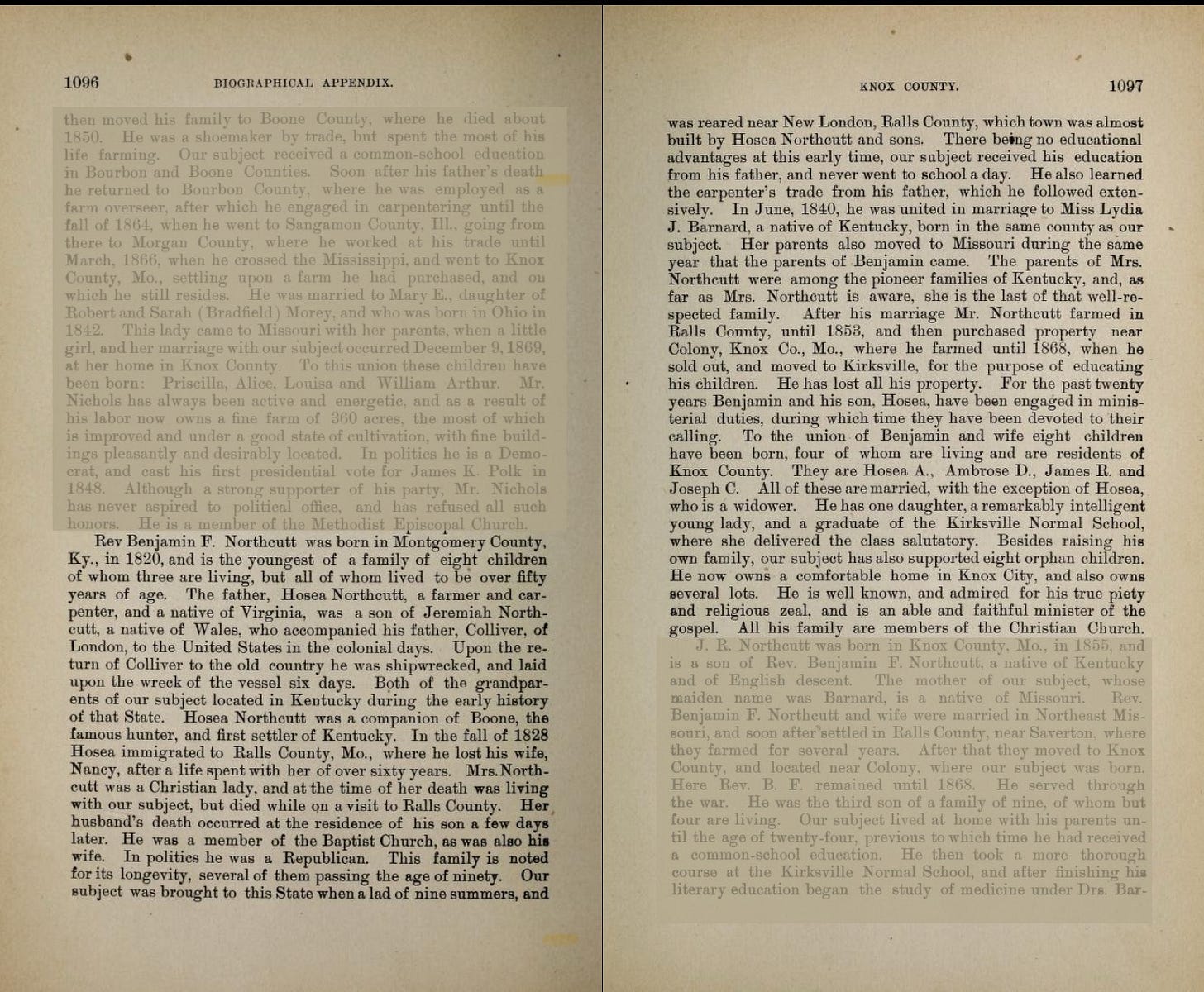
I suspect that Benjamin purposefully left out his Civil War service because it was a period in his life that he would prefer to forget. It certainly was a contrast to how he had lived his life for the previous twenty years and was also in conflict with the messages he frequently shared whenever he preached from the Bible. Without J.R. Northcutt’s brief mention of his father’s service (“He served through the war”) in his own biographical sketch (which is partially shaded, but still readable above), one might have missed this important life-altering detail. I believe the war experiences of both father and son were what eventually led both men to pursue the pulpit. In Benjamin’s case, he made a bold move to sell off all of his land and completely give up farming. Educating his six children, five of which were still at home, became a top priority along with serving God in a higher capacity. This resulted in the family’s move to Kirksville in 1868 and the start of a new chapter for both B.F. and H.A. Northcutt.
I’m not sure if it was Benjamin who followed his son Hosea into the ministry or the other way around. What I do know is that both father and son appeared to have worked in tandem during the first few years of their ministry within the Christian Church. Their work together as a ministry team is even mentioned in another book, Historical and Biographical Sketches of Early Churches and Pioneer Preachers of the Christian Church in Missouri, which was published in 1888. Right around this time, H.A. Northcutt began to evangelize on his own. His father B.F. was well into his sixties and understandably slowing down.
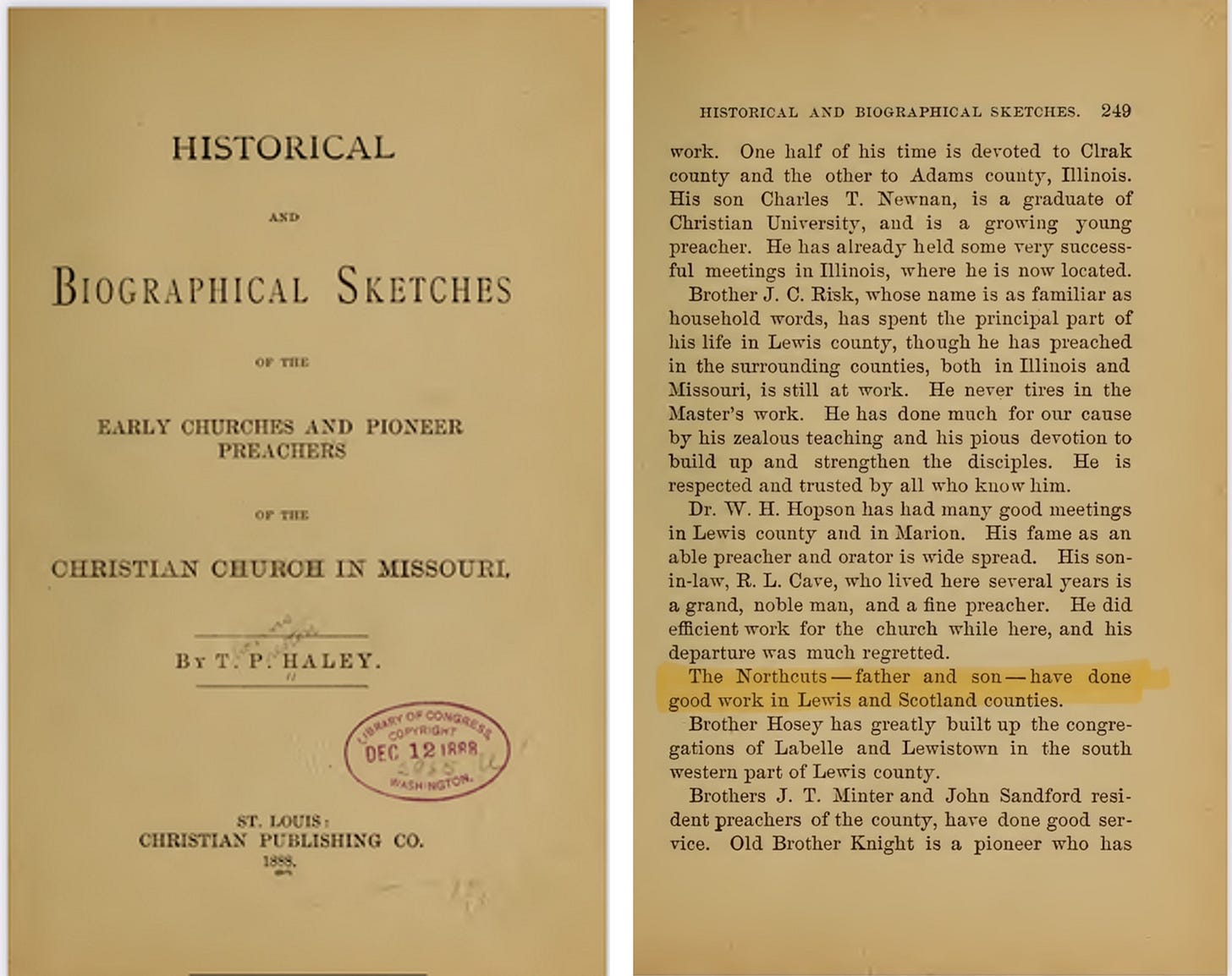
In my sleuthing through the archived newspapers on Newspapers.com, there are easily over one hundred news items mentioning H.A. Northcutt’s preaching and evangelizing activities, but not as many for B.F. Northcutt. This is partially due to the timing of each of the men’s respective activities. Benjamin Franklin Northcutt was more active in the late 1860s and 1870s when newspapers mostly existed for only larger communities and cities. Hosea Allen’s ministry activities peaked in the late 1890s and early 1900s, during the time when nearly every small town published at least one, if not two weekly newspapers. Both men’s early ministry activities were focused mainly among the small towns of northeastern Missouri, specifically in Lewis, Knox, Scotland, and Schuyler counties.
This map shows the early range of both men’s ministries with Benjamin focused more locally. Hosea Allen often traveled across the state. By the 1890s, Hosea’s reputation had him preaching and leading rivals from as far as Georgia to California and even as far north as New Brunswick and Nova Scotia, Canada.
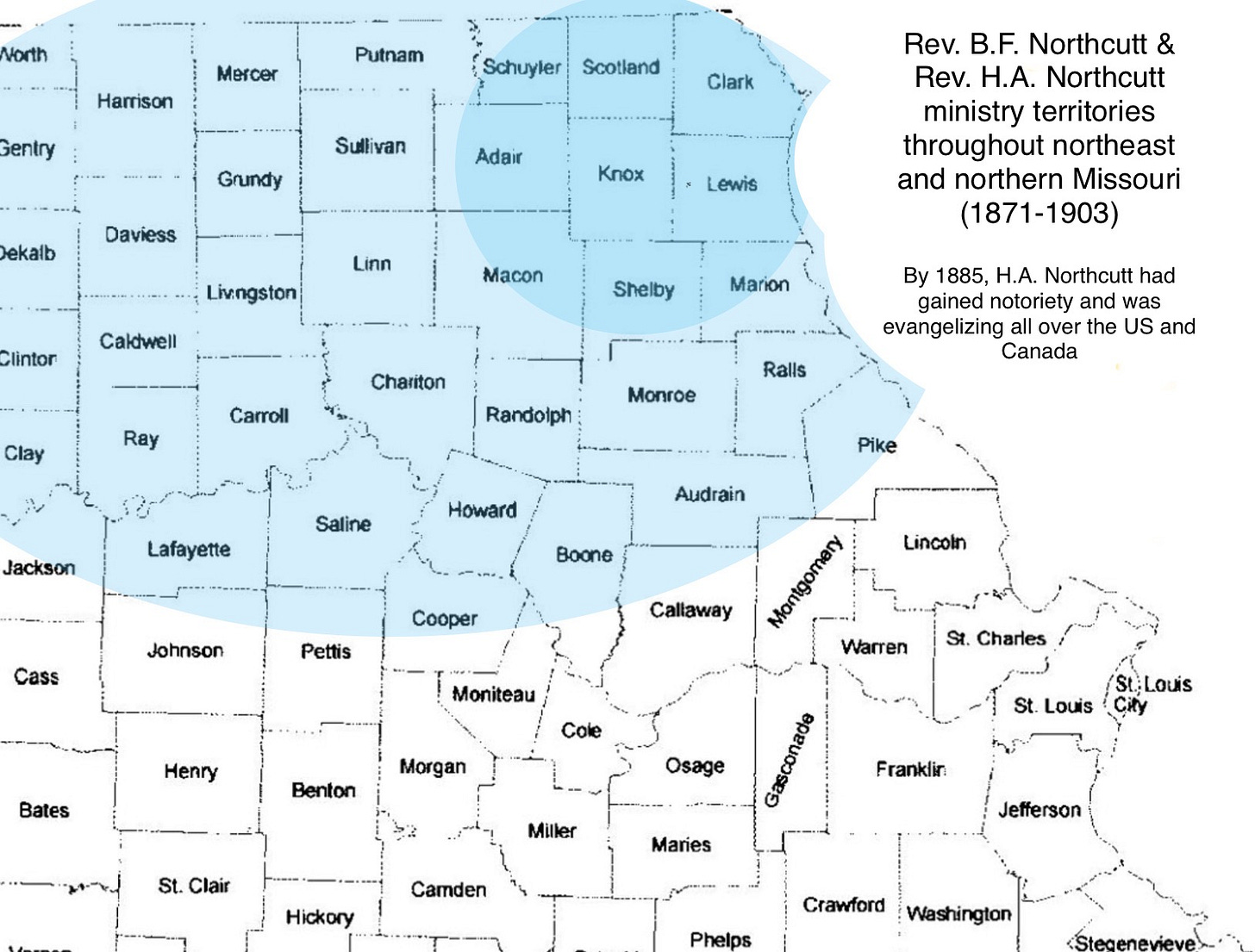
I have been unable to find any record regarding Benjamin’s ordination as a minister, but I suspect it occurred a few years before Hosea was ordained. Hosea Allen’s obituary (at the end of this chapter) offers a clue as to how this may have happened. It stated that H.A. “was ordained to the ministry March 16, 1871, by the congregation at Millport, MO, with which he united as a boy.”
In the 1800s, Christian ministers were typically ordained locally through some process that involved theological testing, community testimony, and a public calling by a congregation. By the early 1870s most of the Northcutt clan had relocated to the growing town of Millport, MO in Knox County (See Millport: The small town that “was”… with a large Northcutt family history). So, for Benjamin, I’m guessing his ordination may have happened through a “calling” in either Colony, MO (before he sold the family farm) or Kirksville, MO after the family relocated there.
According to a fellow family historian, Don Rekus (whose family also has strong ties to Millport), the first ministers to the town did not have a dedicated place of worship:
“The first church in Millport was a log building built in 1849, which was used as a school as well. The church was non-denominational and had no regular pastor. Preachers passing through were allowed in the pulpit regardless of their denomination. Around 1859, the Christian Church gained sufficient strength to call a regular pastor, but they had outgrown the small log building, so they built a larger frame building from native lumber sawed at Millport watermill.
The Christian Church was given its choice to decide which Sundays they wanted to use the building, and the remaining Sundays were open to any other denomination except the Mormons, who were not allowed to use the building at all.”
Millport served as the home base for both Benjamin and Hosea during their early days as ministers. Both men preached in the Millport church, which was constructed in 1879. It remains standing today. But they also spent a significant amount of time on horseback and buggy traveling to nearby towns to preach, conduct services (such as marriage and funerals), and spread the teachings of the Bible wherever they were welcomed.

In traveling to other communities they often had to preach in whatever public gathering accommodations were available. This might be a schoolhouse, a courthouse, or the use of even other denomination’s religious spaces. Travel schedules, frequency of visits, and locations varied as this sampling of news items attests:

A large part of both Benjamin and Hosea’s ministry activities were focused on proselytizing and bringing more members into the Christian faith through “protracted meetings” and revivals. Many of these events occurred over the course of multiple days. At the culmination of these events it was common for both men to wade into the water to baptize the newly faithful in a riverside fashion. These “admissions” to the church were frequently reported in the local newspapers. Here are three early examples of father and son ministering together to support new church “admissions”:

By the late 1800s, many communities finally had enough “admissions” to support the building of permanent structures for their congregations. Once a church building was completed many congregations sought to employ resident pastors on a more permanent basis.
Both Benjamin and Hosea took on pastoral ministries for several First Christian Church communities. These were often multi-year appointments that were also renewable. In my research, I found several churches (in addition to Millport) where the Northcutt ministers served as pastors. Notable ones include:
Downing Christian Church 1888 - B.F. Northcutt was appointed as the first pastor of the Downing Christian Church on June 10, 1888. Downing, MO was located 50 miles northeast of Knox City. I assume he traveled their just a few times a month.
LaBelle First Christian Church 1870 - Both father and son were regular ministers for the LaBelle congregation between 1870 and 1880, with H.A. Northcutt being more active between 1879-1884. In 1885, the LaBelle congregation appointed H.A. as the full-time pastor. He held this position until 1887, when he was appointed as a special ‘state evangelist’ by the First Christian Church and took on a permanent role in traveling, preaching, and evangelizing.
Knox City First Christian Church 1889 - B.F. was the part-time pastor of the Knox City church from its founding in 1879 until his death in 1895. And according to historical records, he was also somewhat responsible for the church's founding.
According to the book Knox City, MO: In and Around by Larry Goodson, the idea for the building of the First Christian Church in Knox City may have started in the living room of Benjamin Franklin Northcutt’s own home:
“1889 the congregation decided to erect a new church building and a meeting was held at the home of B.F. Northcutt which resulted in the selection of a building committee composed of W.T. Thompson, George Smith, Frank Knight, and J.R. Northcutt.”
Completed in 1889, this was the church in which that my great-grandmother May Northcutt grew up. It was the home church of the Northcutt family.
Here are photos of both the Knox City and LaBelle First Christian churches that the father and son ministers were involved in.
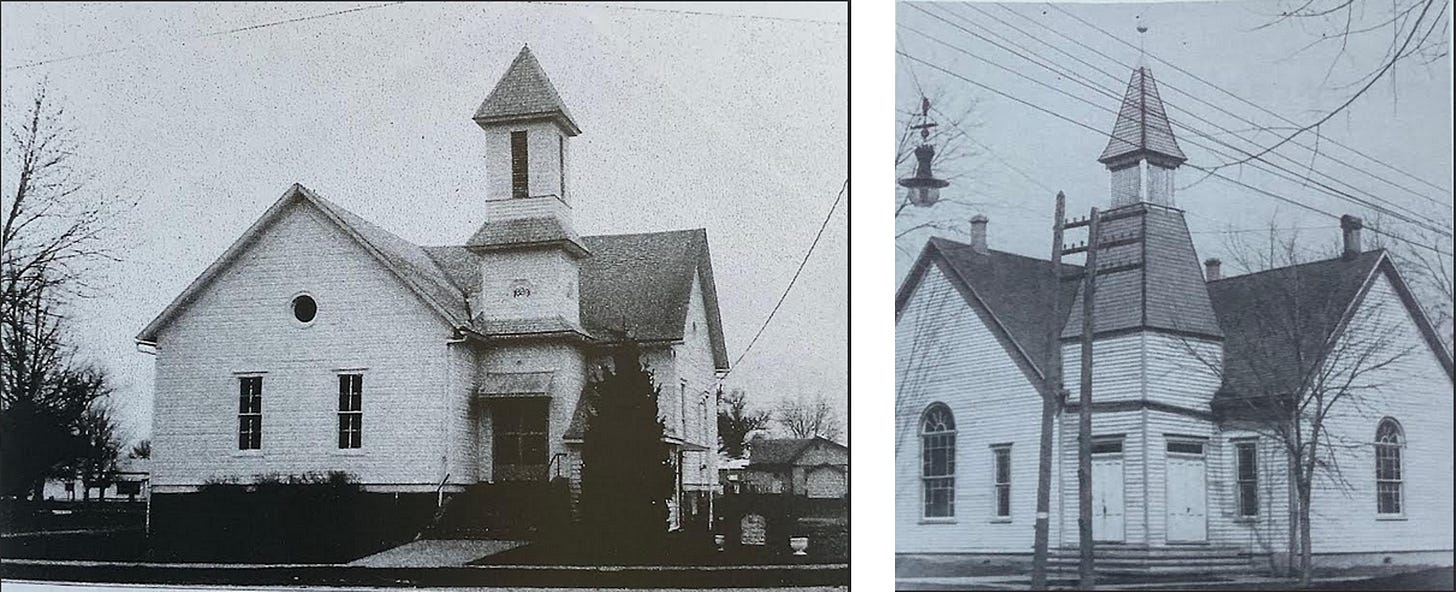
In the fall of 1885, B.F. Northcutt received an unusual ministry request that harkened back to his days as a soldier in the Civil War. I suspect that this request may have initially given him some pause. But given that it most likely involved some of his former fellow infantry comrades, I believe B.F. felt honored to accept the invitation to provide the blessing for a small reunion of the 21st Missouri Infantry, Company B. In total, thirteen members of Company B were present and signed the below Resolution of appreciation to the Captain that had hosted the reunion:
“We cannot go home without leaving a token of the unbroken chain of loyal friendship, every link of which was welded in fires of battle. That we commend Capt. Davis to the world for his matchless worth as an officer and a soldier in war, and his brave fearless course of life in time of peace; as a Christian soldier and minister enlisted in guiding and directing the moral and religious destinies of those within the sphere of his useful life.”
I assume B.F. Northcutt’s name was not added to the signatures noted in the news article (below) because he had not been a member of Company B. He had served in Company D. But I suspect that he did appreciate and identify with the passage “as a Christian soldier and minister” in the resolution. It seems that he had not been the only former Civil War captain who had taken up the pulpit after leaving the battlefield.
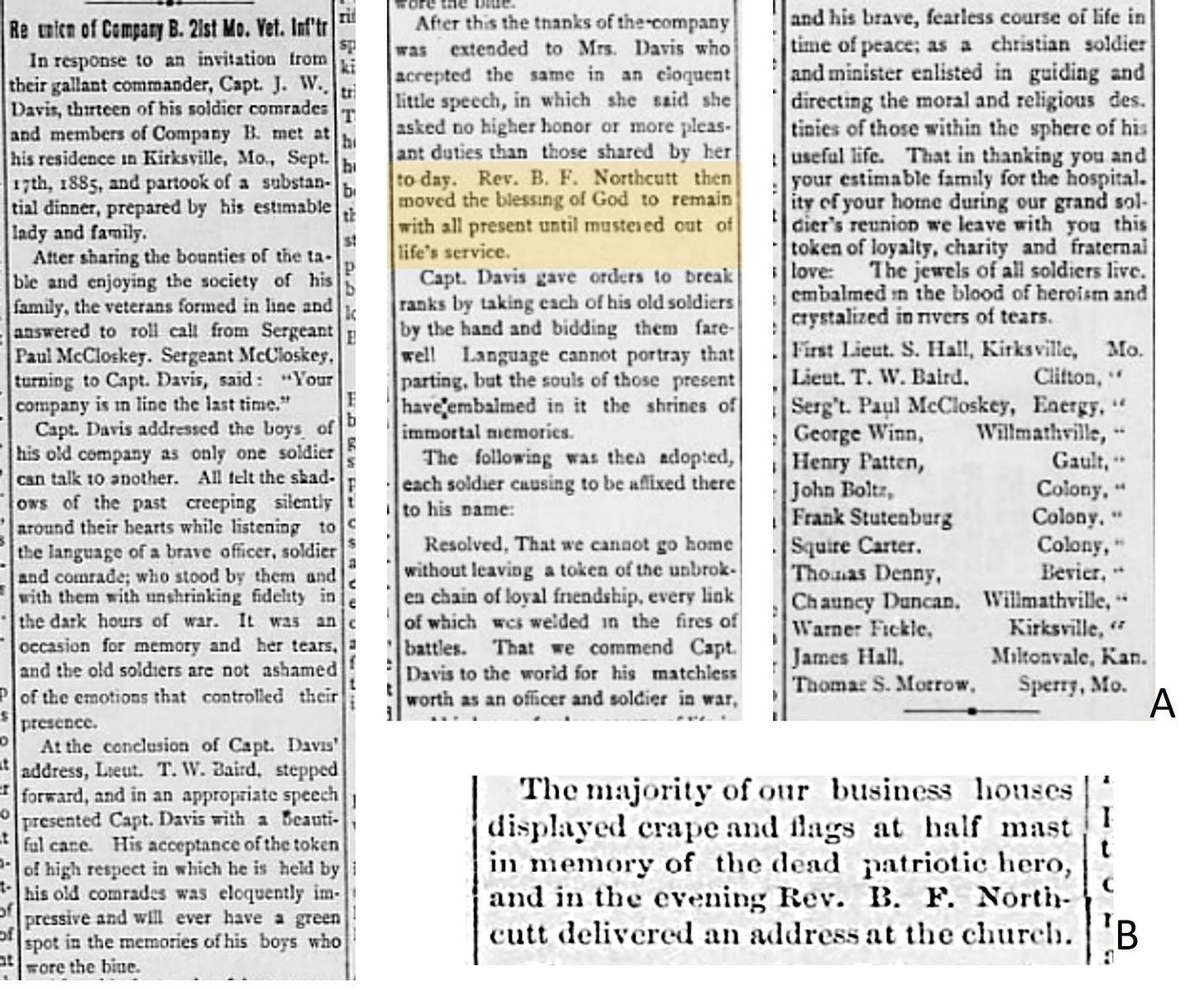
The summer of 1885 also marked the passing of the great Union Army commander Ulysses S. Grant, who died July 23, 1885. It appears that B.F. was also tapped to deliver a local remembrance and eulogy for the congregation in Knox City, when Grant’s funeral took place on August 8, 1885.
Somewhere around 1886, it appears that B.F. Northcutt’s health may have been wavering. I found a few news items that mentioned poor health and an extended trip to California with his wife Lydia. The trip most likely also stirred the interest of Hosea. A year later H.A. Northcutt took his daughter Mary on an extended six-month sojourn to California. I assume H.A. also used this trip to further expand his evangelical reach.

The last several years of Benjamin’s life appeared to have been quiet ones. Well into his seventies by the mid-1890s, he was no longer regularly traveling to other communities to deliver Sunday services. But he was still occasionally performing local weddings and funerals. These two newspaper items, among the many that I encountered in my research, piqued my interest. The funeral notice because of the age of the deceased. The marriage notice because of the apparent time of its event.

On the unusual marriage news item, I would love to have seen Benjamin’s face when he responded to the door knock at half past 10 p.m. Quite honestly, I’m surprised that he even performed a ceremony at 10:30 p.m. But perhaps the couple were already well known to “Uncle Ben” (a term of endearment that I found in a few newspaper items mentioning him) or perhaps there were extending circumstances that were not suitable for publishing.
For whatever reason, in my research I was unable to locate any type of real obituary for Benjamin Franklin Northcutt, despite his longevity and profuseness as a minister. This is perplexing, because it is well documented that H.A. Northcutt frequently wrote very eloquent and lavish obituaries for the funerals he performed. These long epitaphs often appeared on the front page of the local newspapers.
For this reason, I suspect it may have been a direct request from B.F. that no obituary be published about him. The only notice I could find of his death was a strangely worded notice that made no mention of Benjamin Franklin Northcutt by name. It instead referred to him only as “the father of Rev. Hosea Northcutt” despite acknowledging he was “well known throughout northeast Missouri.” Benjamin Franklin Northcutt was 74 years old when he passed away in Knox City, MO. He had been a Christian minister for more than thirty years.
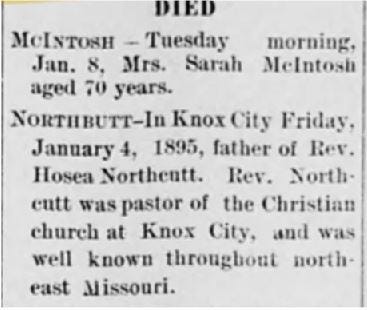
Perhaps the passage selected and carved into the base of B.F.’s headstone offers some clues to my 3x-great grandfather’s legacy. But since he’s buried in Millport, MO and the photo that I have of his grave is unreadable, I will need to wait until I can visit in person to understand what it says.
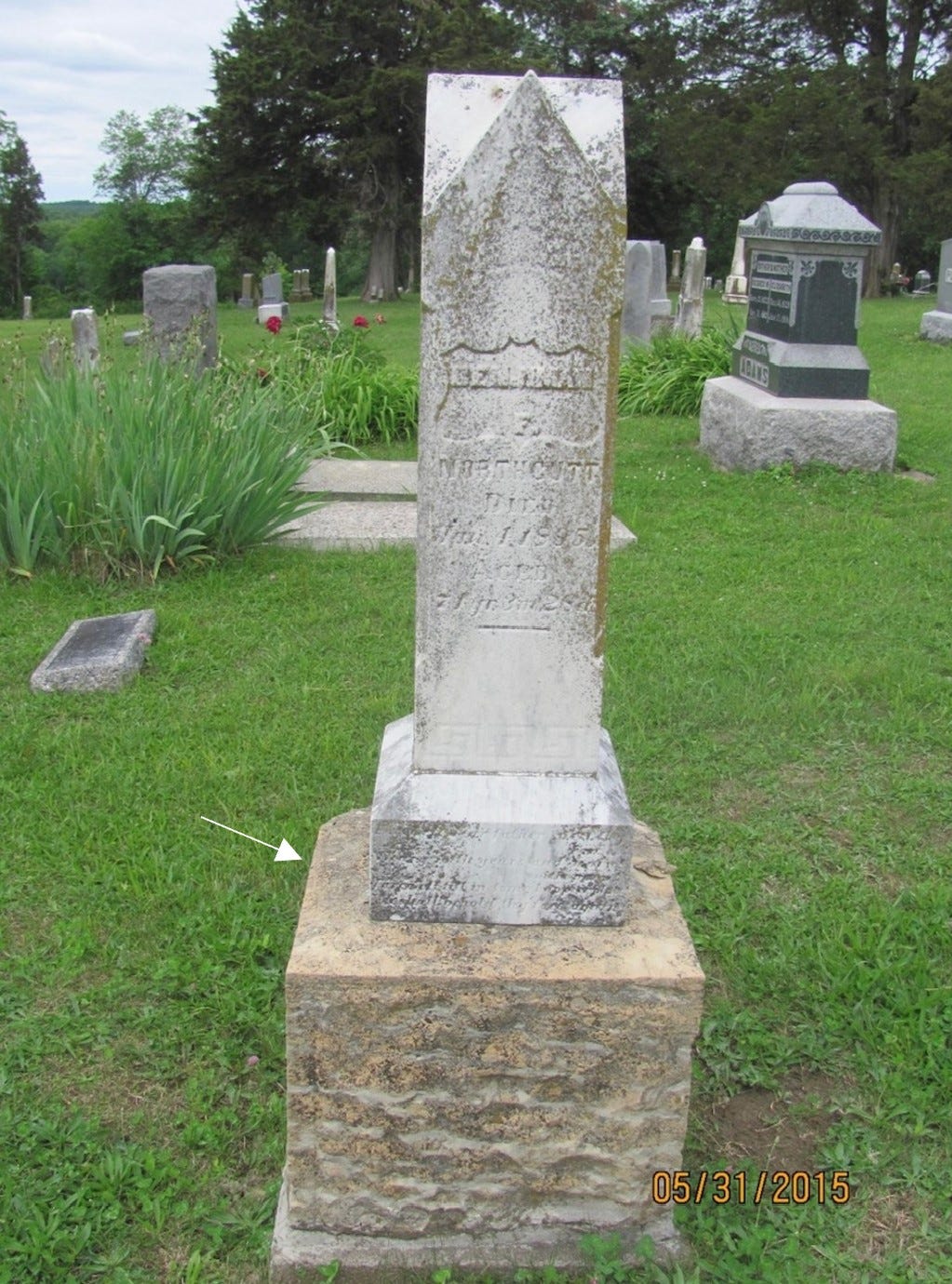
With the entanglement of both father and son ministry activities, it seems fitting to also provide a short summary of Hosea Allen Northcutt’s evangelical impact.
Hosea Allen had quite a forceful and powerful presence on the stage and in the pulpit. Early in his career as a minister, he had lost his wife Nancy Elvira Beach Northcutt (1846-1872) to an illness, leaving him with a young five-year-old daughter to raise. Mary Lydia “Mamie” Northcutt was partially raised by her grandparents, B.F. and Lydia, while H.A. dedicated himself to a life of evangelizing. He never remarried.
By the early 1890s and 1900s, he was traveling extensively throughout the United States and Canada leading revivals, preaching God’s word, and performing “admissions” into the First Christian Church. Here are just a few newspaper notices noting his skills as a preacher. From Savannah, GA to Tacoma, WA, Taylor, TX to Versailles, KY and on up into Nova Scotia, Canada, H.A. was well-regarded for his oratory talents.

This news item below provides a good sense of the type of biblical orations for which H.A. Northcutt was well known. In this case, his sermon was derived from scriptures found in 2 Peter 3:1-18 and explores what Northcutt calls the “Three earths and three heavens.”
When H.A. Northcutt’s death occurred abruptly in 1907 during a short respite at his daughter’s home in Mexico, MO, both family and the church community were stunned. He was only sixty-three and had appeared until just the night before to be in very good health. The obituary in the Schuyler County Republican newspaper provided a lengthy summary of his impact as a minister and evangelist. He was credited with nearly 22,000 conversions, with “one thousand of these” occurring in just the past year.
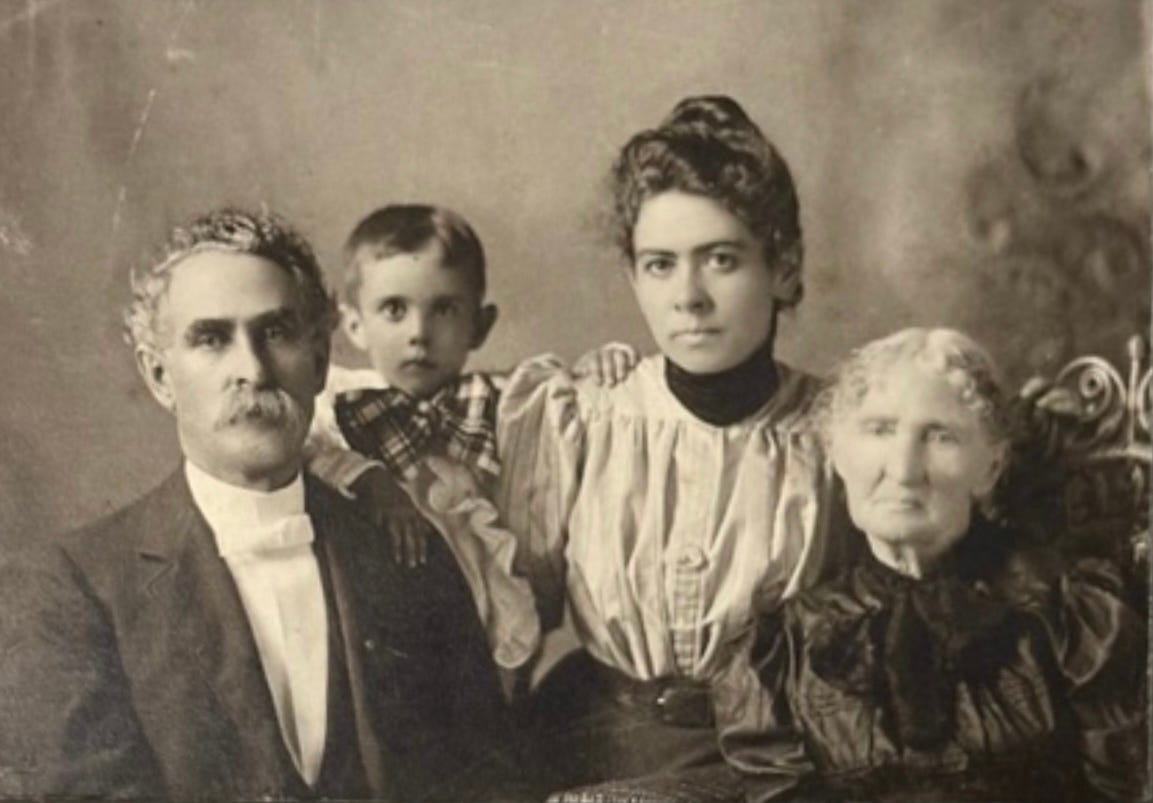
Before closing out this chapter, I want to circle back to my great-grandmother May’s opening reflection in her 1966 letter to my mother Penny. This letter is found in Part 1 of this story.
“I’ve just had my hymn sing. My good Baptist friends call a hymn singing session a ‘sung-spiration’ and I think that is a good name. I ended up with “Work, for the night is Coming”. I’ve known that as long as I’ve known anything. I just play through the book the ones I like as they come. Yesterday I had “I hear thy welcome voice“ and I think of my grandfather, standing up leading the singing when there was no one else to do it – then it was without an organ and grandfather didn’t even have a pitch pipe, but he could sing – how I love to reminisce!” Letter #237. Postmarked September 20, 1966.
These last two chapters have focused on May's grandfather’s experience as both a Civil War soldier and minister. But, I would be remiss if I didn’t also provide a nod to my great-grandmother May and her daily ritual of hymn singing.
I have encountered references to her daily morning “sung-spiration” in several other letters that I have read so far. But this was the first that provided the actual title of a hymn. In this case, she provided two. 😊
Since I wasn’t raised in the First Christian Church, I was not familiar with either of these tunes. My upbringing was Catholic, so my musical church introductions were more along the lines of the standards of Be Not Afraid, Here I Am Lord, and Ava Maria.
Of course, as a curious family historian, I had to do a little research into these hymns. I am sure I may have encountered these songs when I visited either my great-grandmother’s home in LaBelle or attended my grandmother Helen’s church in East Lansing. I remember my great-grandmother May being prone to singing in the kitchen as she made our morning oatmeal on the stove. I now wonder if it could have been either of these hymns.
If you’re curious, you can listen to the music for both hymns here:
Hear thy welcome voice (listen) - written in 1872
Work, for the night is coming (listen) - set to music in 1864
*Addendum: Benjamin Franklin Northcutt biography correction
In my further research of the Northcutt family line, I’ve become convinced that the individual taking notes during Benjamin Franklin Northcutt’s interview for his biography in the book, History of Lewis, Clark, Knox and Scotland Counties of Missouri (1889), got the reference to his grandfather wrong. “Culliver” was not the first name of B.F.N.’s paternal great-grandfather (the father of his grandfather Jeremiah). But “Culliver”,was the maiden name of his mother (Nancy Culliver) and maternal grandfather (Joseph Culliver). And Joseph Culliver did migrate to America from Oxfordshire, England, near the Wales border. I suspect that the story about Culliver’s father being shipwrecked on his way to England, related to Nancy Culliver’s grand father, not Benjamin F. Northcutt’s great-grandfather.
My inability to validate this story, was also shared by an earlier Northcutt family historian, Dolly Northcutt, who published her lifelong research in the book, Northcutt and Allied Families, 1938. On page 215, she summarized her research findings on the Northcutt Kentucky family branch. None of the other family members validated this claim from Benjamin’s published biography.
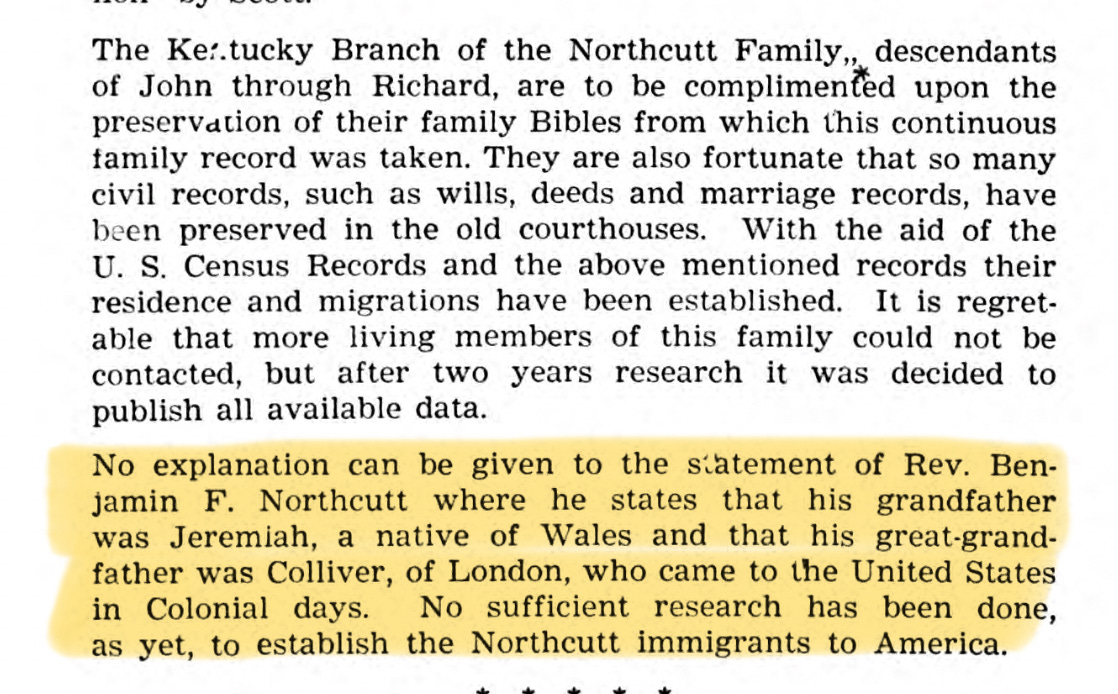
In my research also, I have been unable to validate it as well. Instead, I have found several references through researching sibling lines, that Benjamin F. Northcutt’s grandfather was Jeremiah, the son John Northcutt (1669-1745).

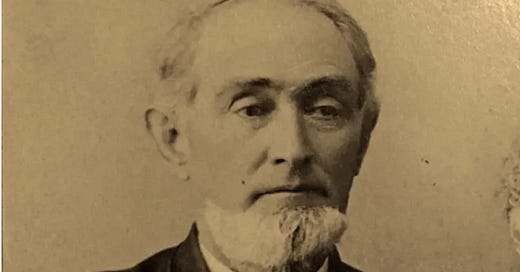



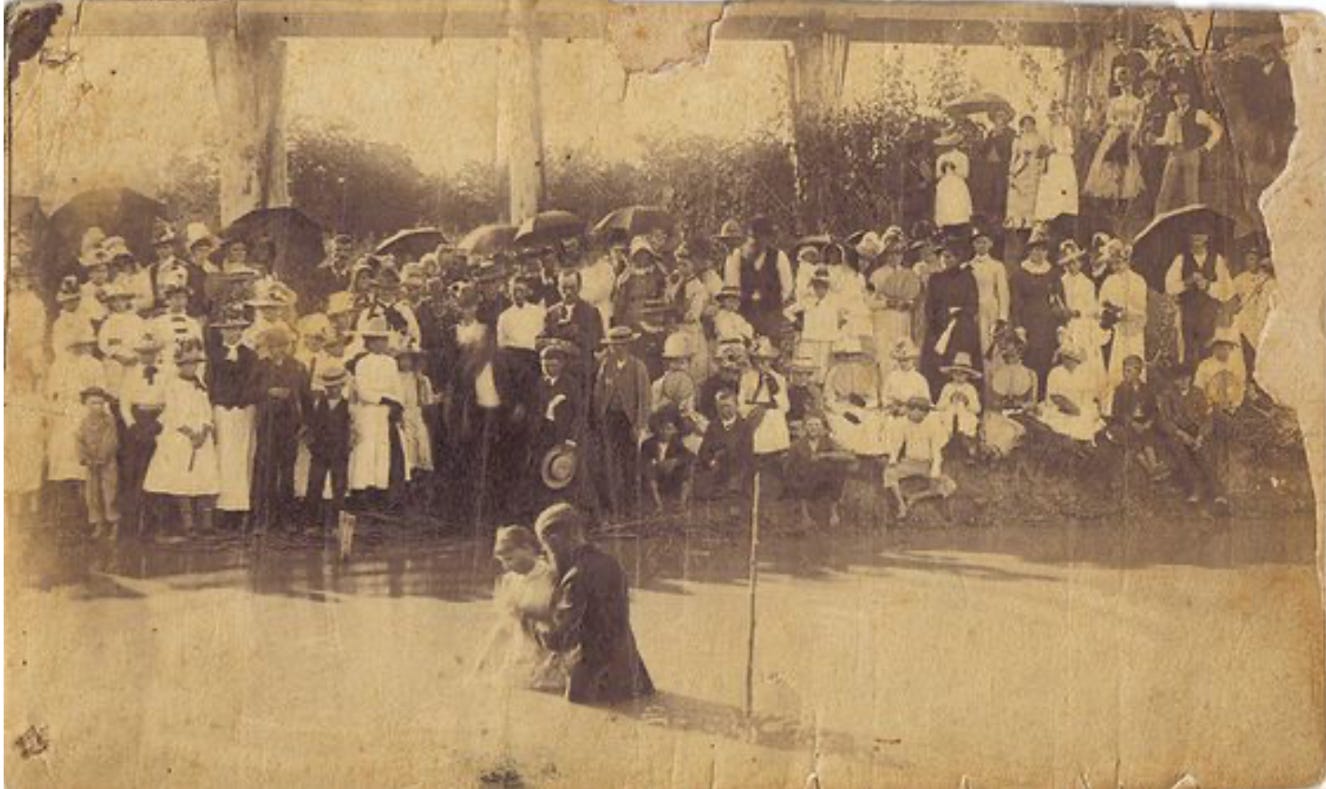

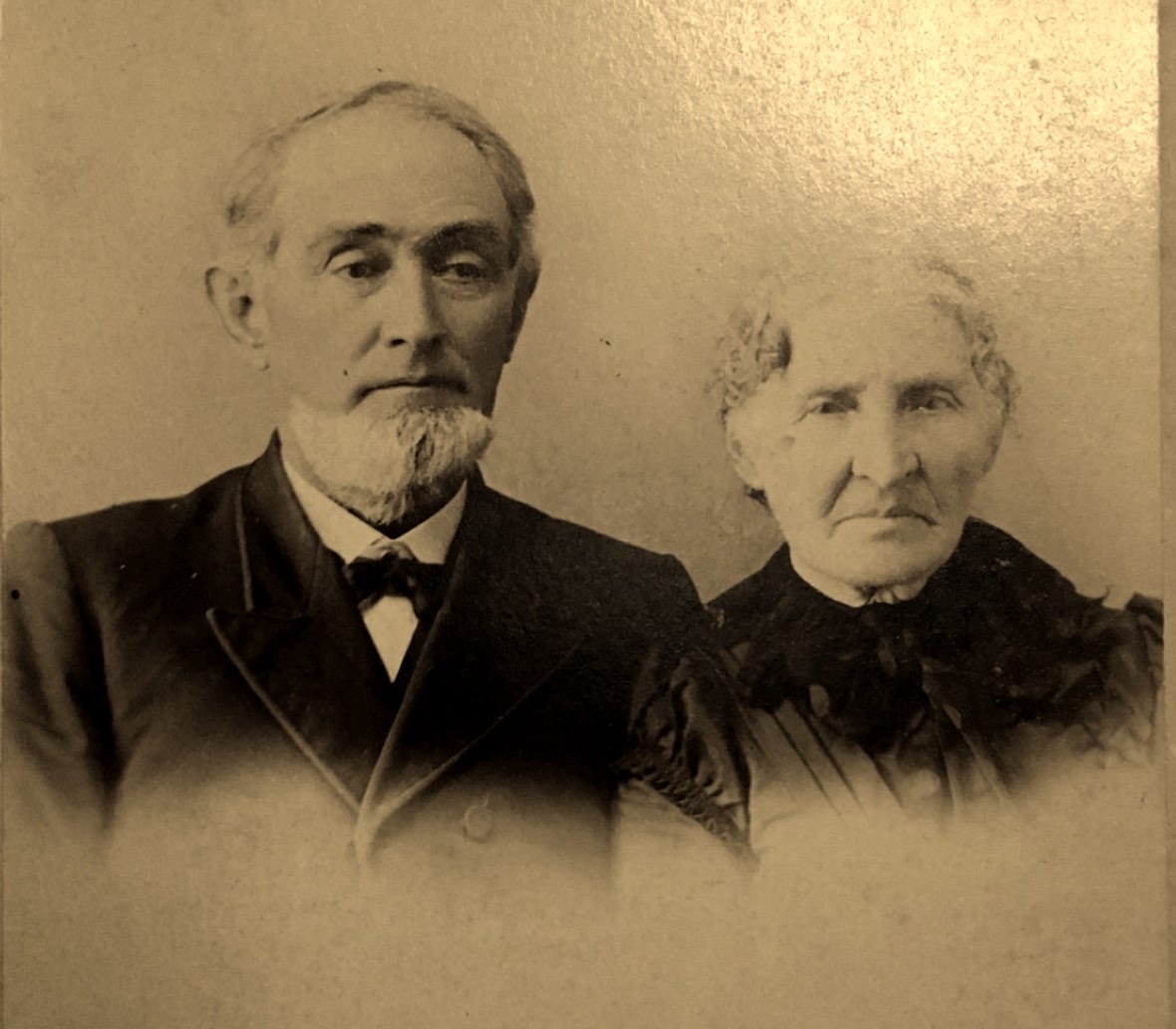


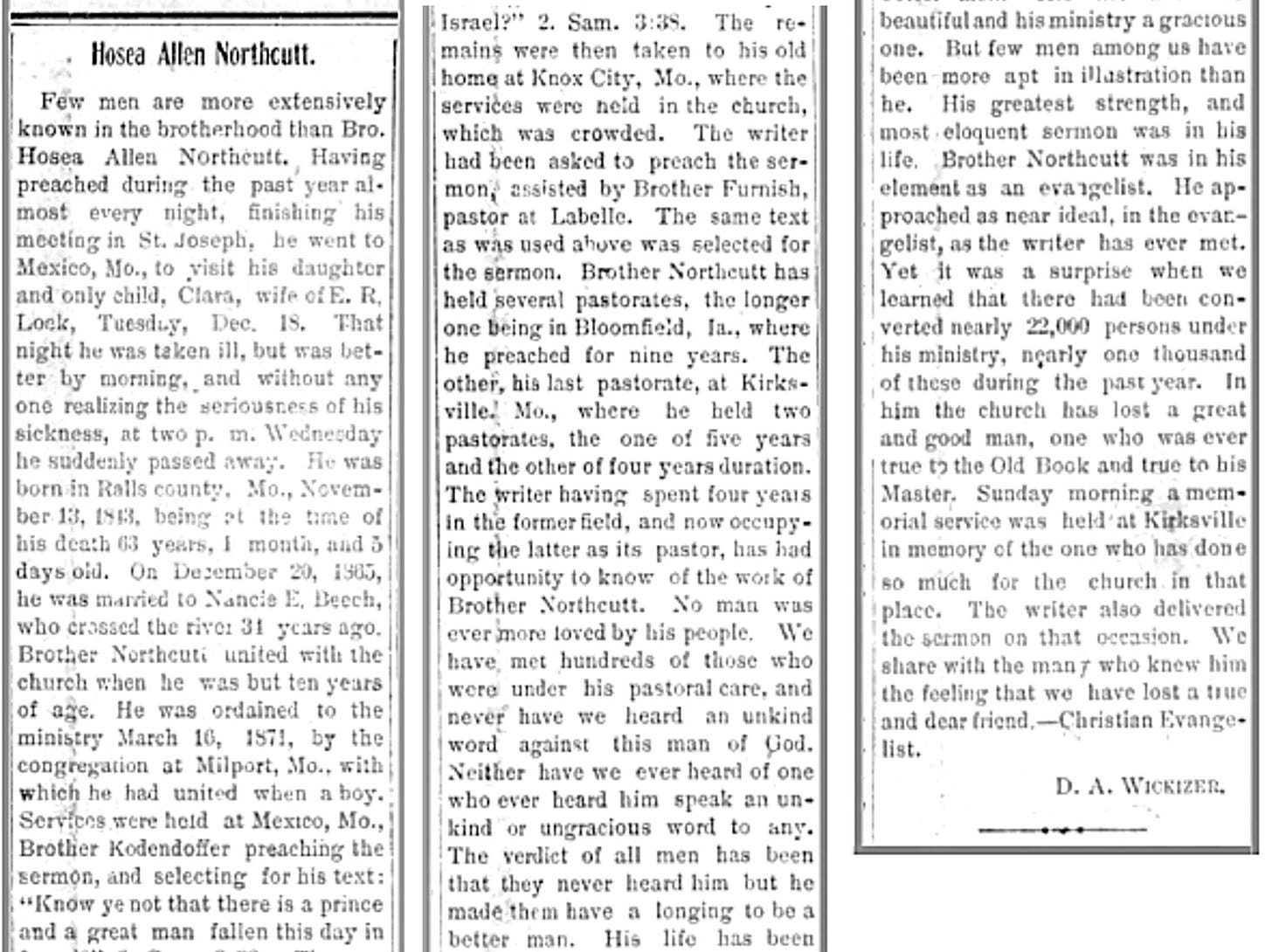

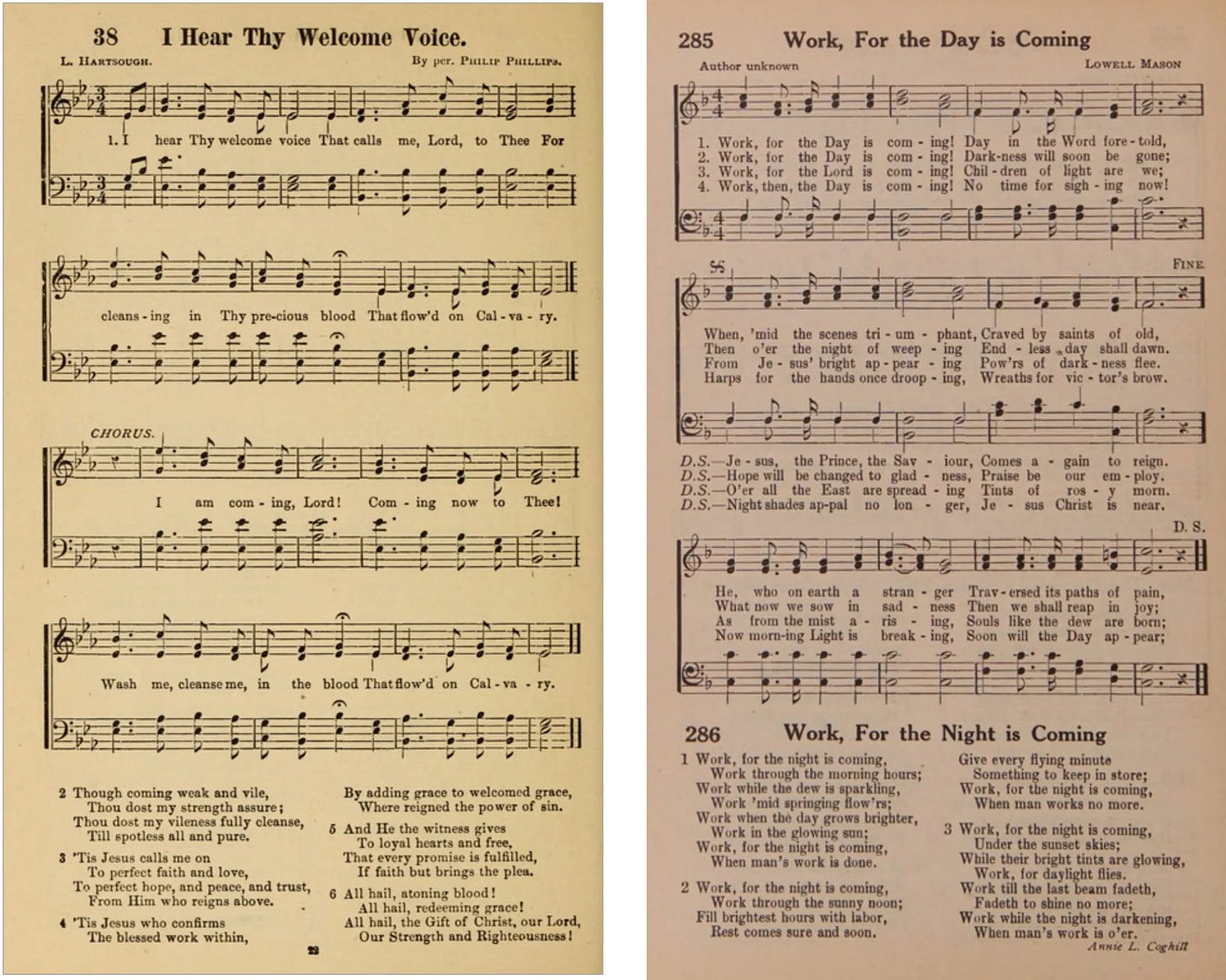

What a treasure and what a heritage!